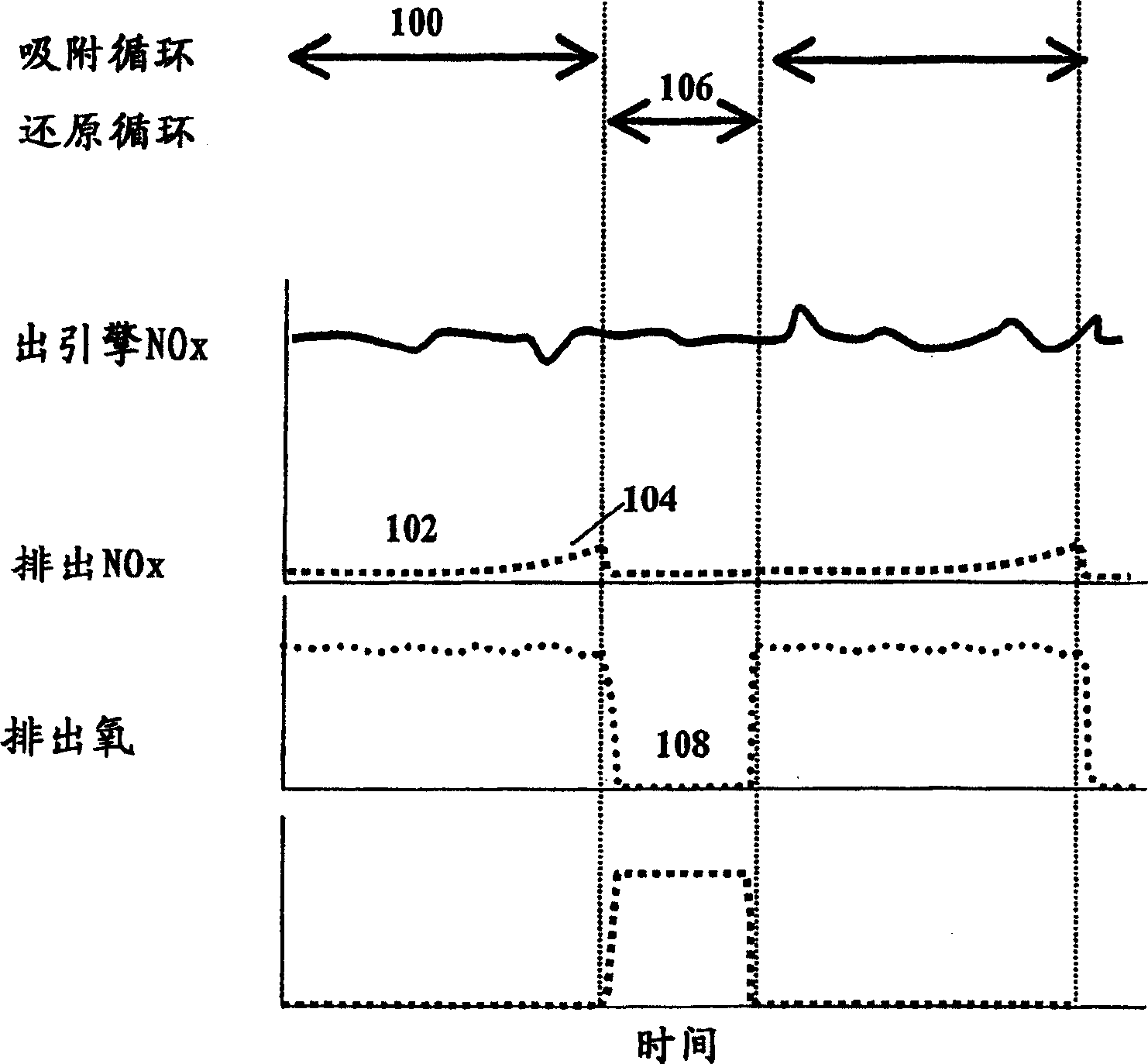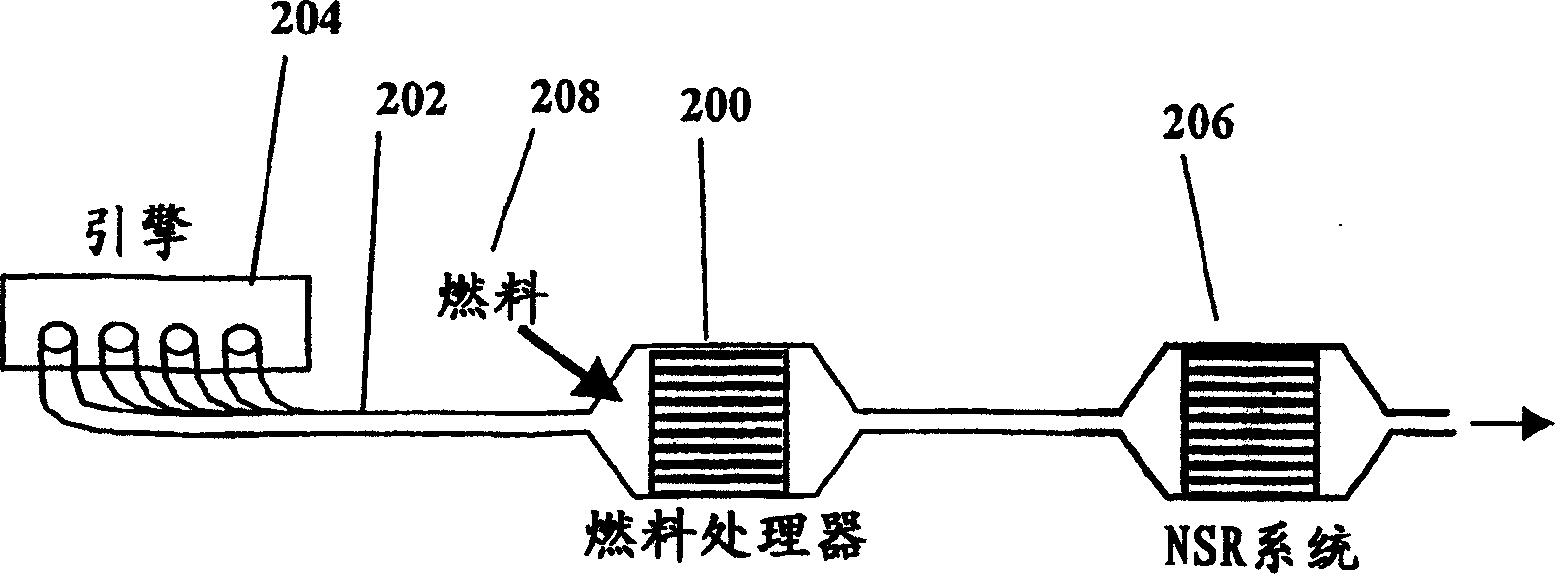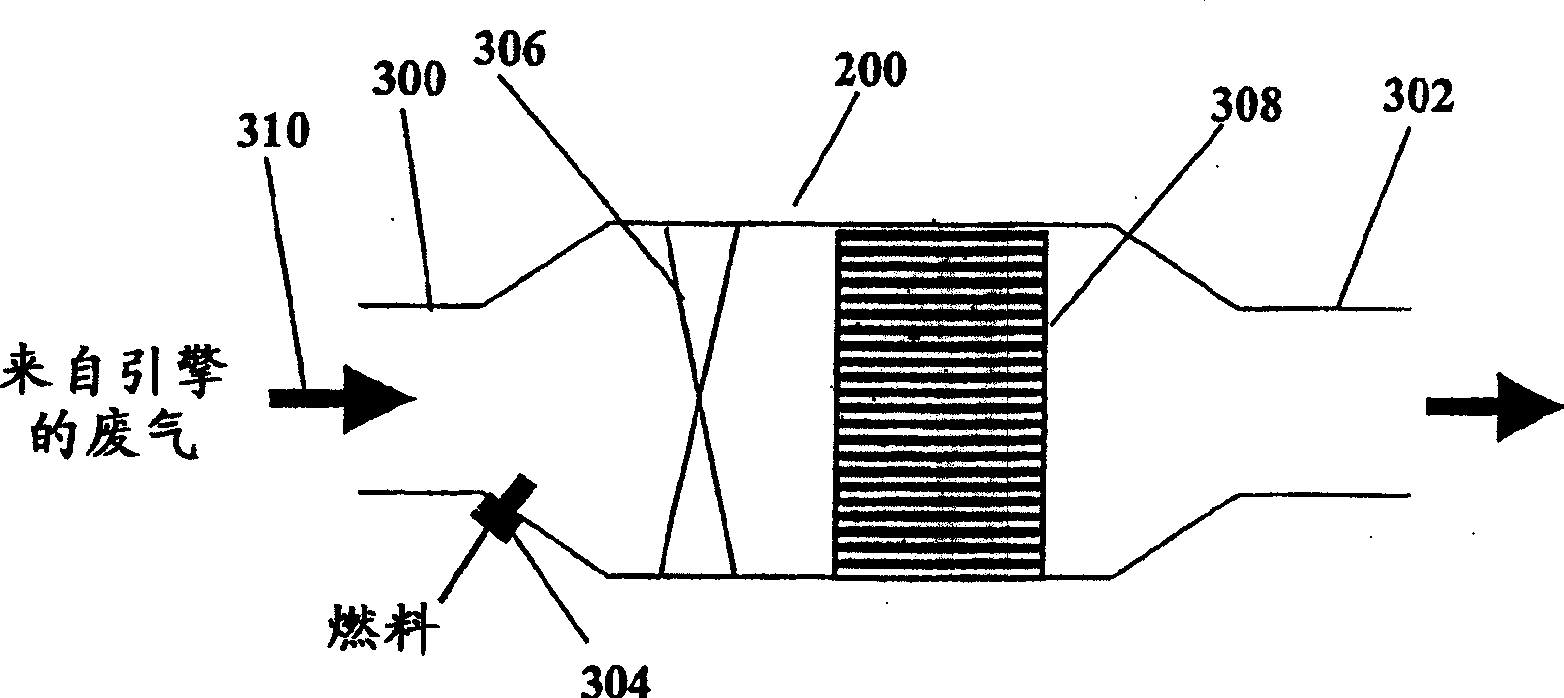System and methods for improved emission control of internal combustion engines
A technology of fuel and fuel treatment, applied to improve IC machine performance and emission control, emission control system, fuel treatment. field, able to solve problems such as system design complexity
- Summary
- Abstract
- Description
- Claims
- Application Information
AI Technical Summary
Problems solved by technology
Method used
Image
Examples
Embodiment 1
[0110] Example 1. A monolithic catalyst was prepared as described in US Patent 5,259,754 to Dalla Betta et al. Rhodium trichloride was dissolved in deionized water at a concentration of about 0.18g Rh / cc, and then added with about 75m 2 / g surface area of zirconia powder. With stirring the mixture, further 20% aqueous ammonium hydroxide solution was added to pH 8. The mixture was then evaporated to dryness and the resulting powder was calcined at 700° C. for 10 hours in air. The final rhodium concentration was 5.5 wt% of the final catalyst. The Rh / ZrO 2 The catalyst was slurried with water and 10% by weight of a 20% zirconium acetate solution to form a slurry with approximately 30% solids.
[0111] A 0.050mm thick, 75mm wide, 3m long River Lite 20-5Sr strip from the Kawasaki Steel Company was corrugated to form V-grooves across a width of 75mm arranged in a herringbone pattern. The groove is about 0.8mm deep. The flake was treated in air at 900°C for 10 hours to form a...
Embodiment 2
[0112] Example 2. Catalyst from Example 1 was placed into a flow reactor containing gas sources and mass flow meters for air, nitrogen and helium as quantitative tracers for mass spectrometry, electric heaters, water injection A second air-assisted sprayer for diesel injection and a static mixer upstream of the catalyst. The catalyst was contained in an isolated area with a diameter of 50 mm, and thermocouple temperature sensors were located upstream and downstream of the catalyst. The mass spectrometer sampling probe was located approximately 50 cm downstream of the catalyst outlet. Adjust air, nitrogen and water flows to form a mixture flowing at 800 SLPM (standard liters per minute) with 5% H 2 O, 8% O 2 , 0.3% He and balance N 2 composition. The mixture was then heated to 370°C with an electric heater. The test results are shown in Figure 8 middle.
[0113] Figure 8 A shows H converted to volume percent concentration units 2 and CO 2 mass spectrum signal. Fig...
Embodiment 3
[0115] Example 3. Figure 9 Another example of generating a pulse of hydrogen is shown. The catalyst used in this example was prepared in a manner similar to that of Example 1, except that the metal flake was corrugated with a groove depth of 1.2 mm. Adjust air, nitrogen and water flows to form a mixture flowing at 200 SLPM (standard liters per minute) with 8% H 2 O, 5% O 2 , 0.3% He and balance N 2 composition. The mixture was then heated to 300°C with an electric heater. Panel A shows H converted to volume percent concentration units 2 and CO 2 mass spectrum signal. Graph B shows the catalyst outlet gas temperature 906 as measured by two thermocouples and the temperature 904 inside the catalyst 1 inch from the outlet. Graph C shows the fuel flow in g / min set by the control system. At time equal to 2630 seconds, the fuel was turned on at a flow rate of 1.8 gm / minute. The fuel burns on the catalyst and a thermocouple close to the catalyst inlet rises rapidly. At a t...
PUM
 Login to View More
Login to View More Abstract
Description
Claims
Application Information
 Login to View More
Login to View More - R&D
- Intellectual Property
- Life Sciences
- Materials
- Tech Scout
- Unparalleled Data Quality
- Higher Quality Content
- 60% Fewer Hallucinations
Browse by: Latest US Patents, China's latest patents, Technical Efficacy Thesaurus, Application Domain, Technology Topic, Popular Technical Reports.
© 2025 PatSnap. All rights reserved.Legal|Privacy policy|Modern Slavery Act Transparency Statement|Sitemap|About US| Contact US: help@patsnap.com



